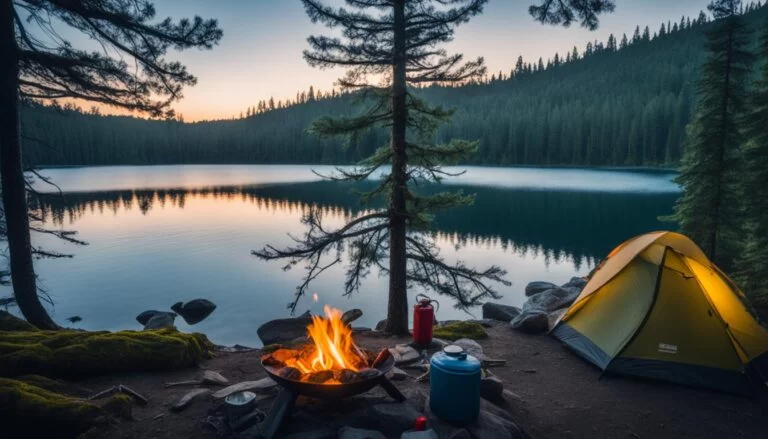How to Avoid Getting Lost While Camping in the Wilderness: Essential Tips for Safe Navigation
- 1. Understanding the Wilderness
- 2. Navigation Basics: Essential Tools for the Job
- 3. How to Track Your Location and Stay Oriented
- 4. Making Smart Decisions in the Wilderness
- 5. A Real-Life Story of Getting Lost
- 6. Explore More with Confidence
1. Understanding the Wilderness
Whether you're camping in a forest, hiking through a mountain range, or exploring a remote national park, the wilderness can be both exhilarating and daunting. The key to staying safe is understanding that nature can be unpredictable. One moment you may be enjoying a scenic view, and the next, fog or a change in the weather can obscure your path, making it easy to get lost.
For example, Sarah and John, experienced campers, once set off for a weekend adventure in the backcountry of Yosemite National Park. They had an excellent plan, but after a sudden storm rolled in, visibility was reduced, and their planned route became unclear. Fortunately, they had prepared well and knew how to use their compass and map to navigate back to camp safely. This type of situation could have turned stressful quickly without proper preparation, but their experience highlights the importance of being ready for the unexpected.
3. How to Track Your Location and Stay Oriented
Tracking your location is crucial to avoid getting lost. Here are some practical strategies to help you stay oriented:
- Know Your Route: Before setting out, familiarize yourself with the map and the terrain. Mark key landmarks, water sources, and areas of interest along your path. This helps if you need to retrace your steps.
- Use Landmarks: Look for unique, permanent features like distinctive rocks, hills, or rivers. These landmarks can guide you if you lose the trail.
- Follow the Sun: In the absence of a compass, the sun can help you orient yourself. In the Northern Hemisphere, the sun rises in the east and sets in the west, helping you identify directions during the day.
Consider the story of Ben and Alicia, two backpackers who got disoriented while hiking in the Canadian Rockies. They had prepared well, but when a storm came in, they found themselves temporarily off-track. Ben remembered a large, recognizable mountain peak from their map, which helped them recalibrate their position and find their way back to their campsite.
4. Making Smart Decisions in the Wilderness
Making the right decisions when you feel disoriented is just as important as having the right tools. Here are some key principles:
- Don’t Panic: It’s easy to become anxious when you’re unsure of your direction, but staying calm will help you think clearly and assess your options.
- Stop and Think: If you’re unsure of your location, stop and take a moment to evaluate your surroundings. This could include checking your map, GPS, or compass.
- Stay Put or Backtrack: If you can’t figure out where you are, consider retracing your steps to a known landmark or campsite.
When Emma and Dave went camping in the Everglades, they were hiking along a less-defined trail when a heavy rainstorm hit. Their decision to pause and wait out the storm on higher ground, along with their careful map reading, ensured they avoided making any risky moves. Had they kept walking in the wrong direction, they might have become even more disoriented.
5. A Real-Life Story of Getting Lost
One of the most common fears when camping is getting lost. However, it’s a fear that can be managed with proper preparation. Take the story of Mike and Lily, who found themselves lost during a remote hike in the Arizona desert. They had been relying on a GPS device, but the battery drained unexpectedly. With no backup map, they wandered for hours before realizing their mistake. Fortunately, they were able to use the position of the sun and some basic knowledge of the area to retrace their steps. Eventually, they found their way back to their campsite, but not without a valuable lesson learned about the importance of redundancy in navigation tools.
6. Explore More with Confidence
By following these navigation tips and using the proper tools, you can explore the wilderness with confidence, knowing that you’re prepared for anything that might come your way. If you're ready for your next adventure, consider visiting places like Pine Cliff Resort, where you can enjoy guided hiking trips that help you get the most out of your experience without the stress of getting lost. A guide will ensure that you stay on track while soaking in the beauty of the wilderness.
Don’t let the fear of getting lost hold you back from exploring nature. With these tips, you’ll be able to navigate with ease and make the most of your wilderness adventure!







